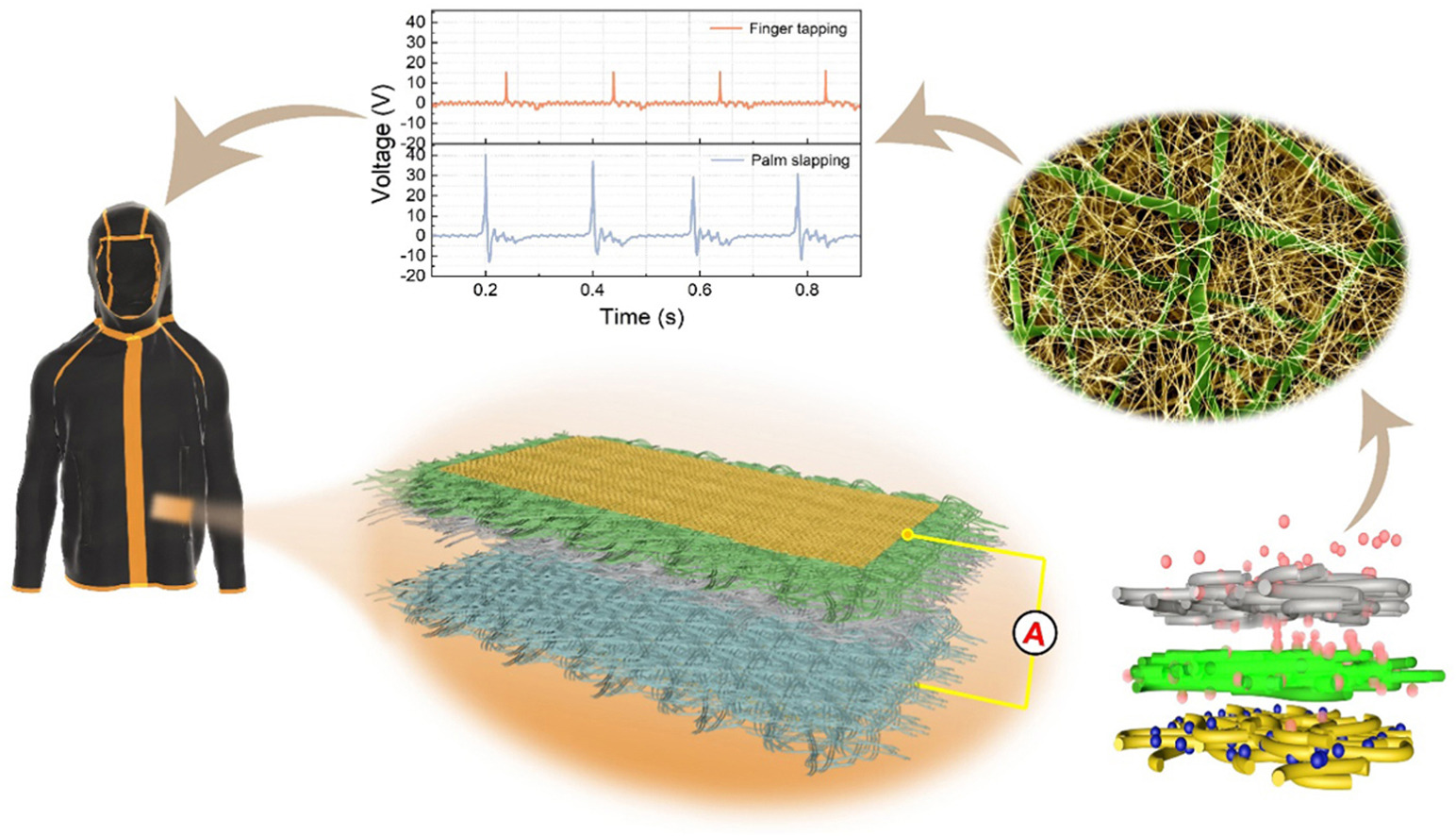Researchers from the University of Fukui, Japan, and Nanjing University in China have developed an all-fibrous composite-layer triboelectric nanogenerators (AF-TENG) that can easily be integrated into fabric. TENGs generate power from body movements to charge electronic devices such as mobile phones or wearables. TENGs do exist, largely used in low-power devices such as LEDs and calculators, and not so in wearables since they are not deemed “breathable” enough, making them uncomfortable to wear. The new multilayered TENGs are made of electrospun fibres and silver nanowires with a polystyrene charge-storage layer, promising high electrical performance and wearability.
“With our work, we are aiming to provide a new point of view towards wearable energy harvesters and smart textiles,” says Dr Hiroaki Sakamoto, the study’s corresponding author.
The triboelectric effect is a phenomenon where a charge is generated on two dissimilar materials when the materials are moved apart after being in contact with each other. TENGs use this effect to convert mechanical motion into electrical energy. Being aimed at wearables, the emphasis is placed on the TENGs’ fabric properties (such as the comfort of the material) as well as their charge-carrying capacity. The triboelectric materials must be safe, biocompatible with the human body, flexible and breathable whilst being able to maintain high electrical output. Among the materials considered for them are electrospun fibres, since they are lightweight and strong, with good electrical properties.
Electrospinning is a technique by which solutions of polymers are drawn into fibres using electrical charge. There are ongoing efforts to add metals to electrospun fibres to improve the electrostatic potential and charge-trapping capabilities,
Researchers from the University of Fukui, Japan, and Nanjing University in China have developed an all-fibrous composite-layer triboelectric nanogenerators (AF-TENG) that can easily be integrated into fabric. TENGs generate power from body movements to charge electronic devices such as mobile phones or wearables. TENGs do exist, largely used in low-power devices such as LEDs and calculators, and not so in wearables since they are not deemed “breathable” enough, making them uncomfortable to wear. The new multilayered TENGs are made of electrospun fibres and silver nanowires with a polystyrene charge-storage layer, promising high electrical performance and wearability.
“With our work, we are aiming to provide a new point of view towards wearable energy harvesters and smart textiles,” says Dr Hiroaki Sakamoto, the study’s corresponding author.
The triboelectric effect is a phenomenon where a charge is generated on two dissimilar materials when the materials are moved apart after being in contact with each other. TENGs use this effect to convert mechanical motion into electrical energy. Being aimed at wearables, the emphasis is placed on the TENGs’ fabric properties (such as the comfort of the material) as well as their charge-carrying capacity. The triboelectric materials must be safe, biocompatible with the human body, flexible and breathable whilst being able to maintain high electrical output. Among the materials considered for them are electrospun fibres, since they are lightweight and strong, with good electrical properties.
Electrospinning is a technique by which solutions of polymers are drawn into fibres using electrical charge. There are ongoing efforts to add metals to electrospun fibres to improve the electrostatic potential and charge-trapping capabilities,
The AF-TENG contains a triboelectric membrane made of two layers of electrospun fibres – one of a material called polyvinylidene fluoride (PVDF) and the other of nylon. Silver nanowires cover these layers. Further, the researchers added a layer of electrospun polystyrene fibres between the silver nanowires and the triboelectric membrane, to retain the charge.
The mechanical motion of the body whilst walking or running causes the triboelectric layers to gain a charge. Normally, the charge buildup on the triboelectric surface is gradually lost or dissipated, reducing the surface charge density and the output performance of the nanogenerator. However, in this case, the added polystyrene membrane collects and traps the charge, retaining the surface charge density of the AF-TENG.
The researchers used the AF-TENG to light up 126 commercial LEDs, each rated at 0.06W, demonstrating the commercial feasibility of the nanogenerator.
The mechanical motion of the body whilst walking or running causes the triboelectric layers to gain a charge. Normally, the charge buildup on the triboelectric surface is gradually lost or dissipated, reducing the surface charge density and the output performance of the nanogenerator. However, in this case, the added polystyrene membrane collects and traps the charge, retaining the surface charge density of the AF-TENG.
The researchers used the AF-TENG to light up 126 commercial LEDs, each rated at 0.06W, demonstrating the commercial feasibility of the nanogenerator.









